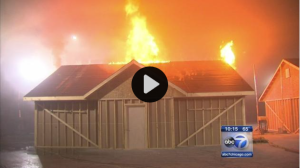By Kim Smiley
On February 9, 2016, two commuter trains collided head-on in Upper Bavaria, Germany. Eleven people were killed and dozens were injured. Investigators are still working to determine exactly what caused the accident and the train dispatcher is currently under investigation for involuntary manslaughter and could face up to five years in prison if convicted.
 Although the investigation is still ongoing, some information has been released about what caused the crash. The two trains collided head-on because they were both traveling on the same track toward each other in opposite directions. Running two trains on the same track is common practice in rural regions in Germany and these two trains were scheduled to pass each other at a station with a divided track. The drivers of both trains were unaware of the other train. The accident occurred on a bend in a wooded area so the drivers could not see the other train until it was too late to prevent the collision.
Although the investigation is still ongoing, some information has been released about what caused the crash. The two trains collided head-on because they were both traveling on the same track toward each other in opposite directions. Running two trains on the same track is common practice in rural regions in Germany and these two trains were scheduled to pass each other at a station with a divided track. The drivers of both trains were unaware of the other train. The accident occurred on a bend in a wooded area so the drivers could not see the other train until it was too late to prevent the collision.
The dispatcher failed to prevent a situation where two trains were running towards each other on the same track or to inform the drivers about the potential for a collision. Investigators have stated that the dispatcher sent an incorrect signal to one of the trains due to “human error”. After realizing the mistake – and that a collision was imminent – the dispatcher issued emergency signals to the trains, but they were too late to prevent the accident.
All rail routes in Germany have automatic braking systems that are intended to stop a train before a collision can occur, but initial reports are that the safety system had been manually turned off by the dispatcher. German media has reported that the system was overridden to allow the eastbound train to pass because it was running late, but this information has not been confirmed. Black boxes from both trains have been collected and analyzed. Technical failure of the trains and signaling equipment have been ruled out as potential causes of the accident.
The information that has been released to the media can be used to build an initial Cause Map, a visual root cause analysis, of this issue. A Cause Map visually lays out the cause-and-effect relationships and aids in understanding the many causes that contributed to an issue. The Cause Map is built by asking “why” questions. A detailed Cause Map can aid in the development of more effective solutions.
One of the general Cause Mapping rules of thumb is that an investigation should not stop at “human error”. Human error is too general and vague to be helpful in developing effective solutions. It is important to ask “why” the error was made and really work to understand what factors lead to the mistake. Should the safety system be able to be manually overridden? Is the training for dispatchers adequate? Does there need to be a second check on decisions by dispatchers? Should two trains traveling in opposite directions be sharing tracks? I don’t know the answers, but these questions should be asked during the investigation. Charging the dispatcher with involuntary manslaughter may prevent HIM from making the same mistake again, but it won’t necessarily reduce the risk of a similar accident occurring again in the future. To really reduce risk, investigators need to dig into the details of why the error was made.










